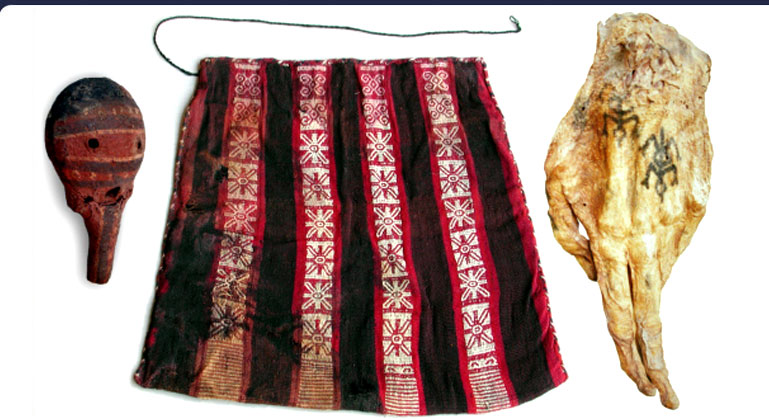




Mandala Tattoo Reveals Ancient Chiribaya Acupuncture Techniques
Ancient Tattoos Linked To Healing Ritual
by Joe Marchant for New Scientist News
October 8, 2010
Mysterious circle tattoos on a Peruvian mummy have been identified as containing burned plant material. The finding sheds light on a possible ancient healing practice that may have been based on similar principles to acupuncture.
The 1000-year-old female mummy was found unwrapped in the sand of the desert at Chiribaya Alta in southern Peru in the early 1990s. She bears two distinct types of tattoos: emblems representing birds, apes, reptiles and other symbols cover her hands, arm and lower left leg, while an asymmetric pattern of overlapping circles is present on her neck.
Maria Anna Pabst of the Medical University of Graz in Austria and her colleagues used microscopy and spectroscopy to analyse the tattoos. Almost all known ancient tattoos were made with ash or soot. But the researchers found that while this was true for the tattoos on this mummy's extremities, the circles on her neck contained burned plant material.
Pabst says this is strong evidence that the two sets of tattoos were made with different intentions. "If you use different materials, they have different functions," she says. The team believe that while the soot tattoos were decorative, the neck circles were probably part of a healing or strengthening ritual.
Acupuncture similarities
Pabst points out that the circles are close to Chinese acupuncture points. She says that tattooing a person at these points could have worked in a similar way to how acupuncture is thought to work. The plants chosen as the staining material would presumably have had medicinal properties, she adds.
From the location of the circles, Pabst concludes that the tattoo treatment may have been intended to relax the subject or to relieve neck pain. When she showed a drawing of the tattoos to a modern-day shamanic healer in Peru, he suggested that they might have been part of a strengthening ritual on an upper-class subject.
The idea that some ancient tattoos have a therapeutic purpose has been suggested before. For example, 5300-year-old Ítzi the Iceman, the oldest European mummy, has some tattooed lines and crosses on his back and legs, which appear to be close to acupuncture points (The Lancet, vol 354, p 1023). But Pabst's study is the first to compare the two types of tattoo in the same mummy.
Journal reference: Journal of Archaeological Science, DOI: 10.1016/j.jas.2010.07.026